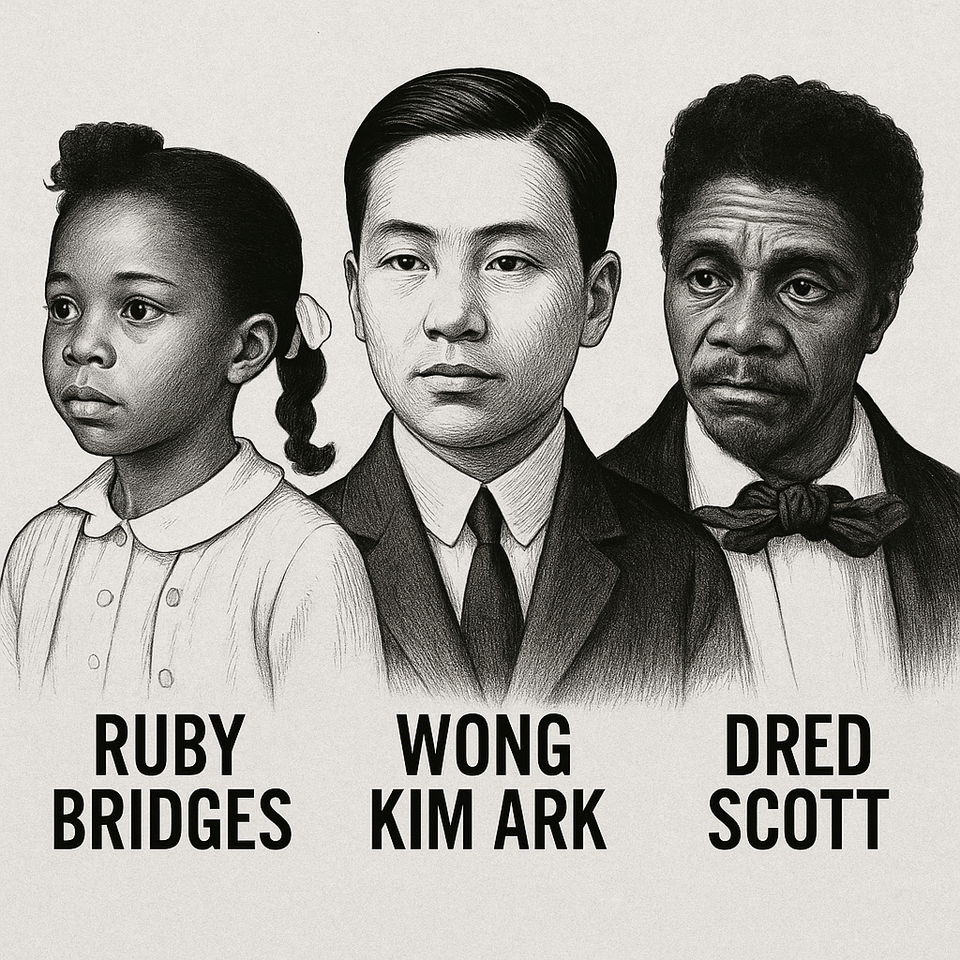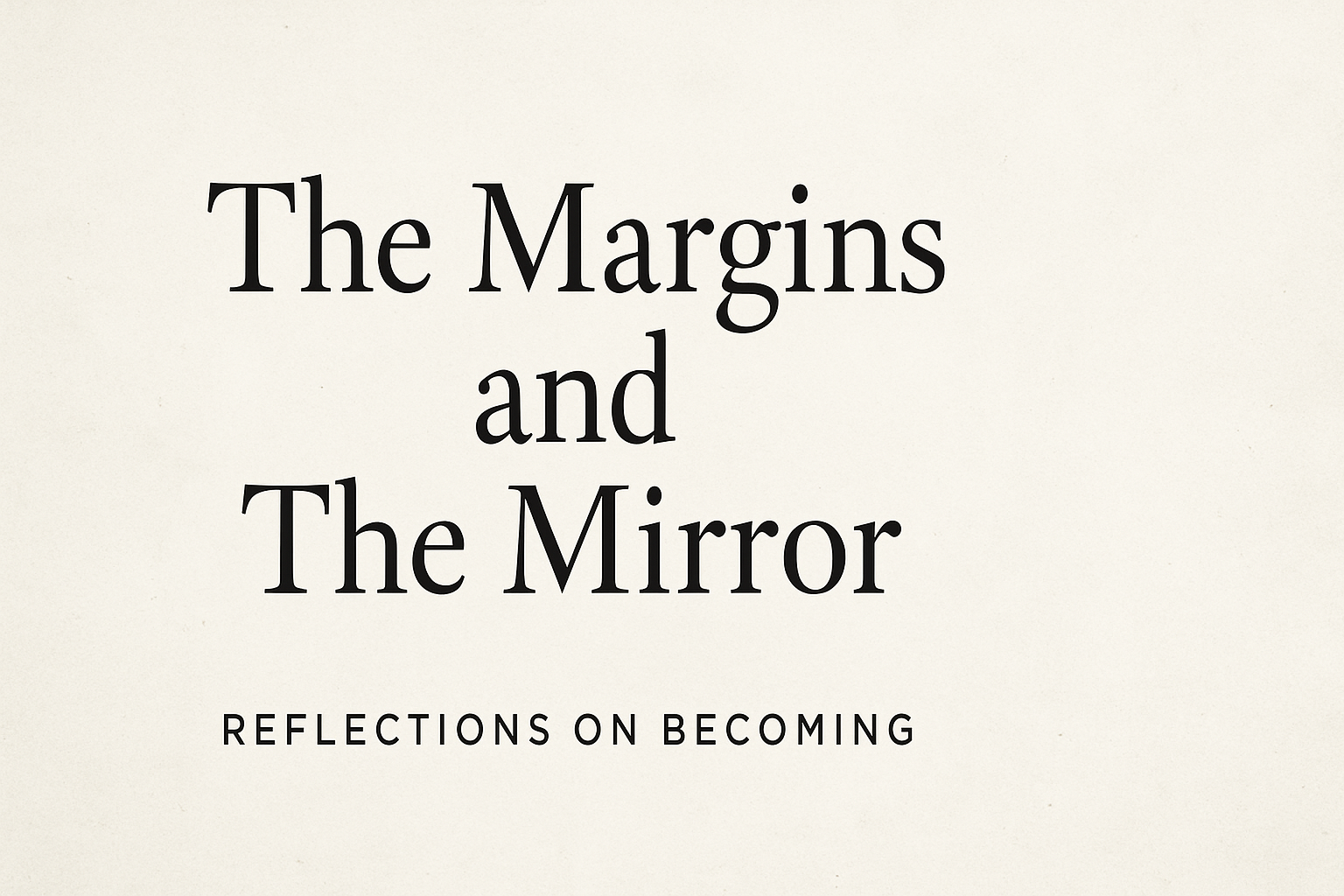The Arc of Rights and the Architecture of Regression

From Dred Scott to Wong Kim Ark to Ruby Bridges, the fight over who belongs in America is far from settled.
I’m not an attorney, nor a constitutional scholar—but it’s not lost on me that the Trump administration has been both intentional and strategic in using the Executive Office itself as a vehicle to expand its power, while also aligning with groups committed to dismantling basic civil and human rights. At the center of this effort is not just a coalition of ideologues—but a president with a personal agenda to exponentially grow executive authority—beyond precedent, beyond checks and balances, and beyond the rule of law itself.
The clearest evidence? The overturning of Roe v. Wade[4]—long considered the bedrock of women’s reproductive rights and bodily autonomy. But that was only the beginning.
This week, the president is actively pursuing the dismantling of the 14th Amendment, which guarantees birthright citizenship—a principle affirmed by the landmark 1898 Supreme Court case United States v. Wong Kim Ark[2]. And now, in places like Louisiana, we’re seeing the erosion of legal protections established by Brown v. Board of Education[3]—the case that made segregated public schools unconstitutional.
The groundwork is being laid to reverse decades of civil rights precedent, brick by brick.
This is not accidental. It’s architectural.
A Pattern of Exclusion
In 1857, the Supreme Court ruled in Dred Scott v. Sandford[1] that Black people—enslaved or free—could not be citizens of the United States. Dred Scott, who had lived in a free state, sued for his and his wife’s freedom and recognition as citizens. Instead, the Court, led by Chief Justice Roger Taney, declared that no Black person had rights the white man was bound to respect.
It took another 41 years—and a young man named Wong Kim Ark—to begin to undo that damage. Born in San Francisco to Chinese immigrants, Wong Kim Ark challenged the denial of his citizenship and won. The Court’s ruling in his favor established the legal precedent for birthright citizenship and directly refuted the logic of Dred Scott.
And yet, today, that precedent is under threat—again.
A Court With No Moral Center?
I am deeply concerned—troubled, in fact—by what appears to be the increasingly partisan nature of the highest court in the land.
Given its recent rulings and ideological entrenchment, I am not confident that this modern Court will not follow in the same shameful footsteps of the 1857 bench. The ideological architecture is already visible—in the reversal of Roe[4], in the targeting of the 14th Amendment, and in the unraveling of civil rights protections that once seemed unshakable.
The Trump administration’s attempt to erase birthright citizenship isn’t just about policy—it’s a re-litigation of who gets to be American.
It reopens the door to a past in which citizenship was a gate kept by race, lineage, and power—not by principle or constitutional guarantee.
This Isn’t Just Law. It’s Lives.
These legal maneuvers are not taking place in a vacuum. They are unfolding against a backdrop of cruelty: the rejection of refugees who fought alongside our troops in Afghanistan; the closure of doors to families fleeing war across Africa and the Middle East; the embrace of white South African “Afrikaners” as persecuted refugees—despite their Dutch colonial lineage and historical role in upholding apartheid.
If the Court once again becomes an instrument of exclusion and oppression, history will remember not just what it ruled—but what it destroyed.
Because ultimately, what’s at stake today is not just precedent, but power.
The Choice Before Us
The ruling this Court delivers in the coming days will either greenlight or restrain the exponential expansion of executive authority—a power that has already been grotesquely abused by this administration. If left unchecked, the executive branch will continue to operate not as a co-equal branch of government, but as an unaccountable force—weaponizing law, dismantling rights, and reshaping democracy into something unrecognizable.
This moment calls for more than legal analysis.It calls for moral clarity.For public courage. For a reckoning.
Because if history teaches us anything—from Dred Scott[1] to Wong Kim Ark[2], from Ruby Bridges to Brown[3]—it’s that rights can be reversed.
And when they are, it’s not just law that changes. It’s lives. Futures. Freedoms.
Call to Action
If you care about democracy, now is the time to speak, write, organize, and vote as if freedom itself depends on it—because it does.
Subscribe to stay informed. Share this message. And if you're ready to move from belief to action—
🇺🇸 Join the movement at The Citizens' Project 2025.
Because love is a verb. And in this moment, love looks like defending the sacred foundations of our democracy.
Footnotes & References
- Dred Scott v. Sandford, 60 U.S. 393 (1857). The Supreme Court ruled that African Americans, whether enslaved or free, could not be American citizens and therefore had no standing to sue in federal court.https://supreme.justia.com/cases/federal/us/60/393/
- United States v. Wong Kim Ark, 169 U.S. 649 (1898). The Court affirmed the right to birthright citizenship under the 14th Amendment for all individuals born on U.S. soil, regardless of parental citizenship.https://supreme.justia.com/cases/federal/us/169/649/
- Brown v. Board of Education of Topeka, 347 U.S. 483 (1954). The landmark decision that declared state laws establishing separate public schools for Black and white students to be unconstitutional.https://supreme.justia.com/cases/federal/us/347/483/
- Roe v. Wade, 410 U.S. 113 (1973), overturned by Dobbs v. Jackson Women’s Health Organization, 597 U.S. ___ (2022). Roe established a constitutional right to abortion, which was overturned in Dobbs.https://www.oyez.org/cases/1971/70-18

